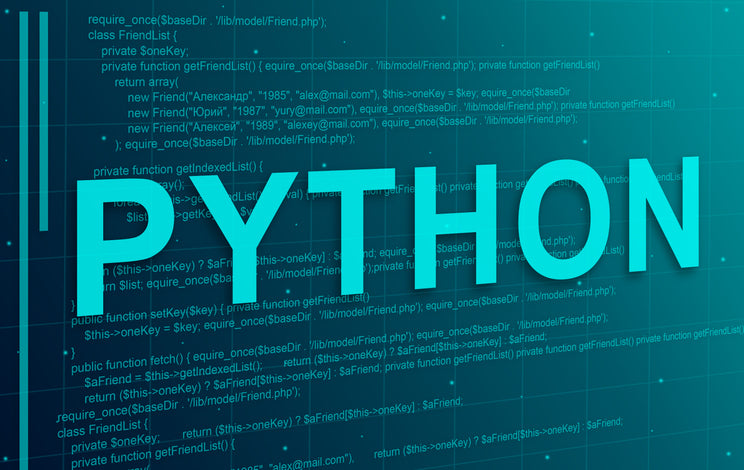

· By Codomo Singapore
What is Python Programming? A Comprehensive Guide for Beginners and Expert
Python, a high-level, interpreted, and versatile programming language, has become one of the most popular choices among developers worldwide. Renowned for its simplicity, readability, and extensive libraries, Python has found its way into various domains, ranging from web development and data science to artificial intelligence and automation. Its growing importance in emerging technologies such as IoT and AI demonstrates its versatility and forward-looking capabilities.
In this comprehensive blog post, we'll delve into the world of Python, exploring its origins, key features, applications, and the reasons behind its widespread adoption.
What is Python?—A Basic Definition
Python is a high-level, versatile, interpreted programming language known for its simplicity and readability. It was created by Guido van Rossum and first released in 1991. Python supports multiple programming paradigms, including procedural, object-oriented, and functional programming.
Key features of Python include:
- Readable and Clean Syntax: Python emphasizes code readability, and its syntax allows developers to express concepts in fewer lines of code than languages like C++ or Java.
- Interpreted Language: Python is an interpreted language, meaning the source code is executed line by line rather than compiled into machine code. This makes development and debugging easier.
- Dynamic Typing: Python uses dynamic typing, meaning you don't need to declare the data type of a variable explicitly. The interpreter automatically determines the type during runtime.
- Extensive Standard Library: Python has a vast standard library that includes modules and packages for various tasks, from web development to data science.
- Community and Ecosystem: Python has a large and active community of developers. Numerous third-party libraries and frameworks are available, making it suitable for various applications, such as web development, scientific computing, artificial intelligence, and more.
- Cross-Platform: Python is compatible with various operating systems, including Windows, macOS, and Linux, making it a cross-platform language.
- Object-Oriented: Python supports object-oriented programming, allowing developers to structure their code using classes and objects.
How Does Python Work?
Python, a high-level interpreted language, stands out for its readability and simplicity. The Python interpreter interprets Programs written in plain text with a .py extension after being compiled into platform-independent bytecode.
The Python Virtual Machine executes this bytecode, providing portability. Python's dynamic typing, automatic memory management, and extensive standard library make it easy to use. Its object-oriented nature supports class and object creation, while the community-driven ecosystem has led to a rich collection of libraries and frameworks.
Python's versatility makes it popular for web development, data science, and machine learning. Its design principles and execution model make it effective across diverse programming domains, including emerging fields such as big data analysis and predictive modeling.

Python Pros and Cons
Python is a versatile and widely used programming language that has gained popularity for various reasons. Like any language, it has its strengths and weaknesses. Here are some pros and cons of Python:
Pros:
- Readability and Simplicity: Python is known for its clean and readable syntax. It emphasizes code readability, and its indentation-based block structure makes it easy to learn and understand.
- Extensive Libraries: Python has a vast standard library that includes modules and packages for various tasks. This extensive collection of libraries simplifies development and reduces the need to write code from scratch.
- Cross-platform Compatibility: Python is a cross-platform language, meaning code written in Python can run on various operating systems without modification. This makes it highly portable.
- Versatility: Python suits various applications, from web development and data science to artificial intelligence and automation. Its versatility makes it a popular choice for many different projects.
- Integration Capabilities: Python can easily integrate with other languages like C and C++, allowing developers to use existing code written in these languages within Python programs.
Cons:
- Performance: Python is an interpreted language that might be slower than compiled languages like C or C++. While performance has improved with the introduction of tools like Just-In-Time (JIT) compilers, it may not be the best choice for performance-critical applications.
- Global Interpreter Lock (GIL): The GIL in CPython (the reference implementation) can limit the execution of multiple threads in a multicore system, affecting performance in multi-threaded applications.
- Mobile Development: Python is less commonly used in mobile app development than languages like Java or Swift. While frameworks like Kivy and BeeWare exist, they may need to be more mature and widely adopted.
- Weak in Mobile Computing: Python is not the best choice for resource-intensive mobile applications or games due to its performance limitations on mobile platforms.
What is Python Used For?
Python is a versatile programming language with a wide range of applications. Some of the common uses of Python include:
1. Web Development
Python's prowess in web development is epitomized by its frameworks, with Django standing out as a robust and high-level choice. Django follows the "Don't Repeat Yourself" (DRY) principle, streamlining the development process and promoting efficient, reusable code. Other popular frameworks like Bottle or Pyramid offer additional options for developers.
Its built-in features include an Object-Relational Mapping (ORM) system, authentication mechanisms, and a powerful templating engine. On the other hand, Flask, a lightweight alternative, empowers developers with greater flexibility and control, making it suitable for smaller projects or prototyping.
2. Data Science and Analysis
Python has become a linchpin in the field of data science. NumPy and Pandas are foundational libraries offering numerical computing tools, data manipulation, and analysis. Real-world applications, such as financial modeling or biomedical research, utilize these libraries extensively.
NumPy excels in providing support for large, multi-dimensional arrays and matrices, while pandas simplifies data manipulation and analysis through its DataFrame structure. Complementing these, sci-kit-learn facilitates machine learning endeavors, offering a plethora of algorithms for tasks ranging from classification to regression.
3. Machine Learning and Artificial Intelligence
TensorFlow and PyTorch underscore Python's ascendancy in machine learning and artificial intelligence. TensorFlow, developed by Google, is renowned for its flexibility and scalability, making it suitable for various machine-learning applications. PyTorch, favored for its dynamic computation graph, appeals to researchers and developers for its intuitive design.
These frameworks empower developers to construct and train intricate neural networks, driving advancements in image recognition, natural language processing, and reinforcement learning. Python's role in recent AI advancements, such as deep learning and predictive analytics, highlights its significance in the field.
4. Automation and Scripting
Python's readability and simplicity make it a preferred language for automation and scripting. Whether automating system administration tasks or crafting scripts for data processing, Python's versatility shines through.
Its extensive standard library and cross-platform compatibility ensure that scripts execute across different operating systems seamlessly, contributing to the language's appeal in automating diverse workflows.
5. Scientific Computing
Scientific computing finds a stalwart ally in Python, supported by libraries like SciPy and Matplotlib. SciPy builds upon NumPy, providing additional functionality for optimization, integration, interpolation, and more. Matplotlib, a versatile plotting library, aids in creating high-quality visualizations, which are crucial in scientific data analysis and presentation.

6. Game Development
While not as ubiquitous as some other languages in game development, Python is embraced for prototyping and crafting simpler games. Pygame, a set of Python modules, facilitates the development of 2D games.
While more feature-rich than some dedicated game development languages, Python's ease of use and rapid development capabilities make it an attractive choice for experimenting with game development concepts.
7. Desktop GUI Applications
Python extends its reach into desktop application development through GUI toolkits like Tkinter, PyQt, and Kivy. Tkinter, a built-in option, is a fundamental GUI toolkit, while PyQt offers additional features and flexibility.
Kivy, specializing in creating multi-touch applications, is particularly suited for mobile and touch-based interfaces. This versatility in GUI development makes Python an adaptable choice for crafting desktop applications with diverse interface requirements.
8. Network Programming
Python's capabilities in network programming stem from its robust socket programming features and a comprehensive standard library.
Developers leverage Python to build network servers and clients and work with diverse network protocols. The language's simplicity and extensive library support streamline the creation of reliable communication systems, reinforcing its utility in network-related tasks.
9. Scripting in Software Products
Python's integration as a scripting language enhances the extensibility of various software products. This integration empowers users to customize software functionality, automate tasks, and create custom plugins.
The ability to extend software capabilities through Python scripting fosters community-driven contributions, creating a dynamic and collaborative ecosystem around many software products.
10. Educational Purposes
Python's readability and simplicity make it an exemplary choice for educational settings where programming concepts are introduced to beginners. Its syntax, designed for clarity and conciseness, enables students to focus on understanding fundamental programming principles without being burdened by the complexities of syntax.
Python's use in education extends beyond introductory courses, with universities and educational institutions adopting it for advanced topics and research projects.
11. Cybersecurity and Ethical Hacking
Python's prevalence in cybersecurity is evident in its use for penetration testing, network scanning, and scripting security-related operations. Its versatility, extensive library support, and ease of use make it a valuable tool for ethical hackers and security professionals.
Frameworks like Metasploit leverage Python to enhance the efficiency of penetration testing and vulnerability assessment.
12. IoT (Internet of Things)
Python's role in IoT projects is on the rise, driven by its lightweight nature, extensive library support, and compatibility with microcontrollers.
Python allows developers to create applications that control and monitor IoT devices, facilitating communication between connected devices. Its adaptability makes it a compelling choice for the diverse and evolving Internet of Things landscape.

Conclusion
In conclusion, Python's journey from its humble beginnings to its current status as a programming powerhouse reflects its adaptability, versatility, and community-driven ethos.
Whether you're a beginner venturing into programming or an experienced developer looking for a reliable and powerful tool, Python offers a welcoming environment and a wealth of resources. As we embrace new technologies and challenges, Python's ability to evolve and integrate with cutting-edge advancements ensures its place as a cornerstone in the future of software development.
Frequently Asked Questions
Is Python free to use?
Yes, Python is free and open-source software. It is distributed under the Python Software Foundation License, a permissive open-source license.
Which is easier, Python or Java?
This is subjective and depends on personal preferences and background. However, due to its simple syntax, many beginners find Python more readable and easier to learn. On the other hand, Java has a more verbose syntax and may be perceived as more complex by some.
Why is Python so popular?
Python's popularity can be attributed to several factors, including its readability, versatility, and a vast ecosystem of libraries and frameworks. It is widely used in web development, data science, artificial intelligence, and automation.
Is Python a beginner's language?
Yes, Python is often recommended as a programming language for beginners. Its clean and simple syntax and a large supportive community make it accessible for newcomers to programming.
Is learning Python difficult?
Compared to some other programming languages, Python is generally considered easier to learn. Its syntax is designed to be readable and straightforward, making it a good choice for beginners. The difficulty of learning any programming language ultimately depends on an individual's background, learning style, and dedication.
What do I need to learn Python?
To learn Python, you need a computer, a text editor, or an integrated development environment (IDE). Python can be downloaded from the official website (python.org), and many online resources, tutorials, and books are available to help you get started.
Which is easier, Python or C++?
Python is generally easier to learn than C++. C++ has a more complex syntax and includes low-level features that can make it more challenging for beginners. Python's simplicity and readability make it a more accessible choice, especially for those new to programming.
